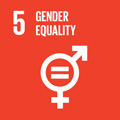- Docente: Gastone Castellani
- Credits: 6
- SSD: FIS/07
- Language: Italian
- Moduli: Gastone Castellani (Modulo 1) Claudia Testa (Modulo 2)
- Teaching Mode: Traditional lectures (Modulo 1) Traditional lectures (Modulo 2)
- Campus: Bologna
- Corso: First cycle degree programme (L) in Physics (cod. 8007)
Learning outcomes
At the end of the course the student will know the most important and advanced physical methods applied to medicine, the main principles of biophysics, and in general the application of physics to the human health. Specific concepts of mechanics, thermodynamics, electromagnetism and radiation-matter interaction will be described with a particulr focus on their application to the study of living matter and for the comprehension of the most advanced physical technologies applied to diagnosis, therapy and radiation protection.
Course contents
Application of physics concepts and methods to the study of living organisms, with particular focus on human health, for therapy and diagnosis.
Radiations in medicine. Radiation-matter interaction, physical quantities in dosimetry. Biological effects and interaction with tissues. Biological effects of ionizing radiation and dose-effect curve for the induction of cancerogenesis.
Radiotherapy: conventional and conformational radiotherapy
Diagnostic: Physical principles of imaging diagnostic. Morfological and functional analysis. Diagnostic by X rays, radioisotopes, ultrasounds and nuclear magnetic resonance.
Elements of health physics: Radioprotection and quality control in diagnostic radiology. Basic radioprotection legislation.
Basic concepts of biophysics: relations between cellular morphology and functions.Introduction to Nevous System. Modeling of Biological Systems. Neural Networks and learning rules.
As integration of theoretical lessons, some basic laboratory experiments will be presented (Nuclear magnetic resonance, X rays tomography, Health physics, Biophysics).
Readings/Bibliography
Lecture notes will be provided. It is recomended to attend to the lectures.
Teaching methods
Lectures and exercises (slides and blackboard)
Laboratory visit
Assessment methods
Written exam (10 questions to be answered in 90 minuts) to be done without textbooks. After that exam, the students can also give an oral exam in order to reach a better score.
Teaching tools
lectures with slides and specific software to use for particular application.
Office hours
See the website of Gastone Castellani
See the website of Claudia Testa
SDGs



This teaching activity contributes to the achievement of the Sustainable Development Goals of the UN 2030 Agenda.
